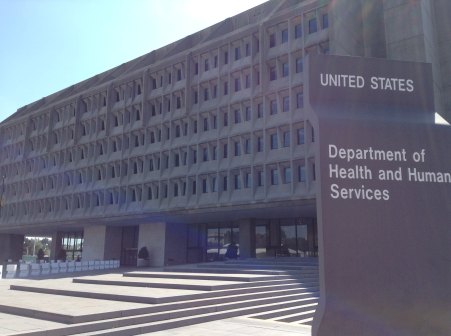Health agencies use supplemental funding to expand telehealth

The Department of Veterans Affairs and the Indian Health Service announced they are using some of the funding they received under a recent coronavirus-response appropriations package to expand telehealth coverage.
The $2.2 trillion law passed in March contained telehealth-specific provisions for the VA and IHS, and both agencies say they are now working to spend their extra cash on resources to deliver medical services remotely.
Both agencies are responsible for large health care systems that are bracing for COVID-19 patients but also are required to care for other health care needs. Both the VA and IHS care for populations that have high rates of health conditions that raise the chance of death caused by COVID-19 and need to reach patients in remote and rural areas.
Buying more tech
To be able to send non-essential workers home and care for more veterans remotely, the VA requested money to purchase at least 180,000 new devices. The VA also reduced the paperwork needed to be qualified to telework for some regions. In the new law, called the CARES Act, the VA has been granted authority to enter into free or reduced-price telecommunications contracts to reach rural veterans for mental health services.
“Since the President signed the CARES Act, VA has been moving quickly to implement the President’s intent to hire new staff, take care of homeless Veterans, use our cutting-edge telehealth technology to keep appointments, help state-run Veterans homes,” VA Secretary Robert Wilkie said in a statement.
For urban veterans who rely on Housing and Urban Development-supported housing, the VA is “working to ensure” veterans have what they need to connect to telehealth services. The VA administers telehealth through enhanced iPads that have webcams and other tools to monitor a patient’s health.
Expanding telehealth pilots
The Indian Health Services, a component of the Department of Health and Human Services, is tasked with serving 2.6 million Americans Indians and Alaska Natives living on reservations and in urban settings. In early April, IHS said it completed test runs using Cisco’s encrypted teleconference services in Oklahoma City and around Navajo territory. The IHS also says it is expanding training on the system.
“The current COVID-19 pandemic reminds us how important it is to be able to reach your healthcare team,” Rear Adm. Michael D. Weahkee, IHS principal deputy director, said in a news release. “Telehealth will further protect our patients and employees by expanding services and increasing access to care, while doing our part to help stop the spread of COVID-19.”
IHS is allowing more technology to be used than usual, including non-public-facing audio and video communications technology from clinics to patients. This relaxing of standards applies to all treatment, not just coronavirus-specific cases and took place on March 27, according to the release. HHS also said it would use its discretion to not pursue violations of the stringent rules on protecting health information from the Health Insurance Portability and Accountability Act (HIPPA). The 1996 law limits the use of telehealth in some cases.





